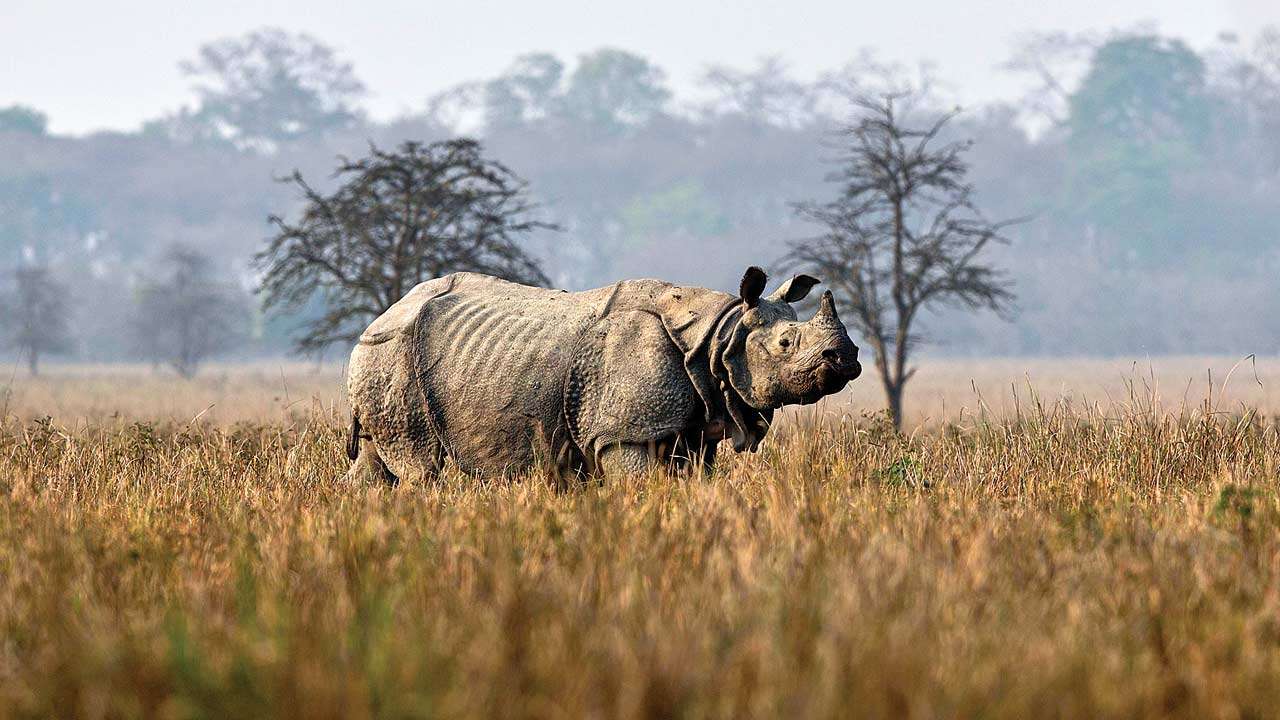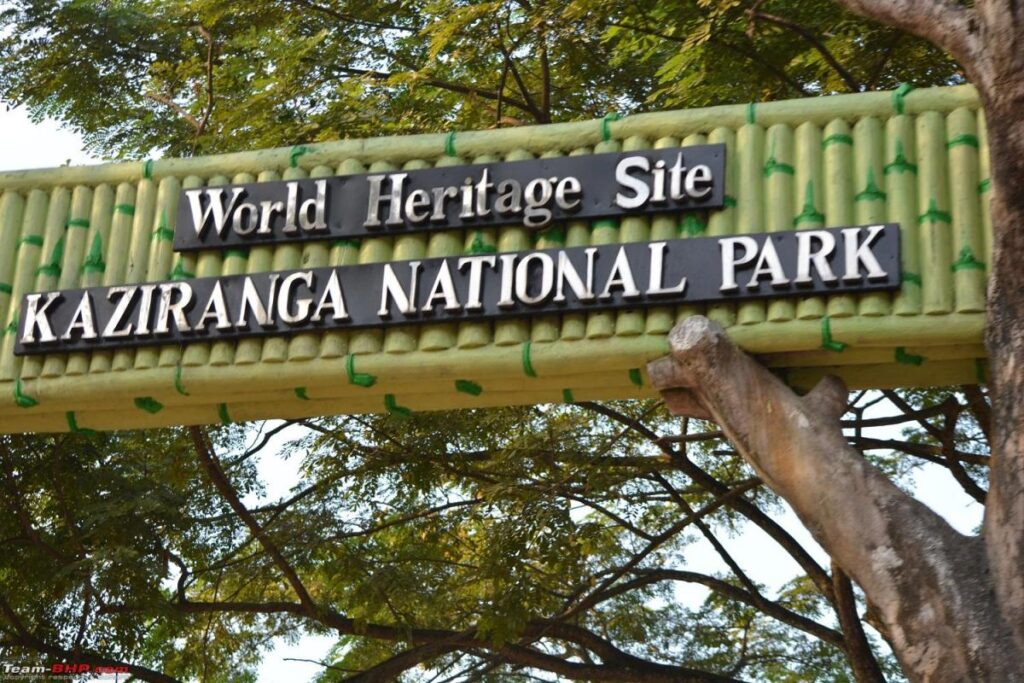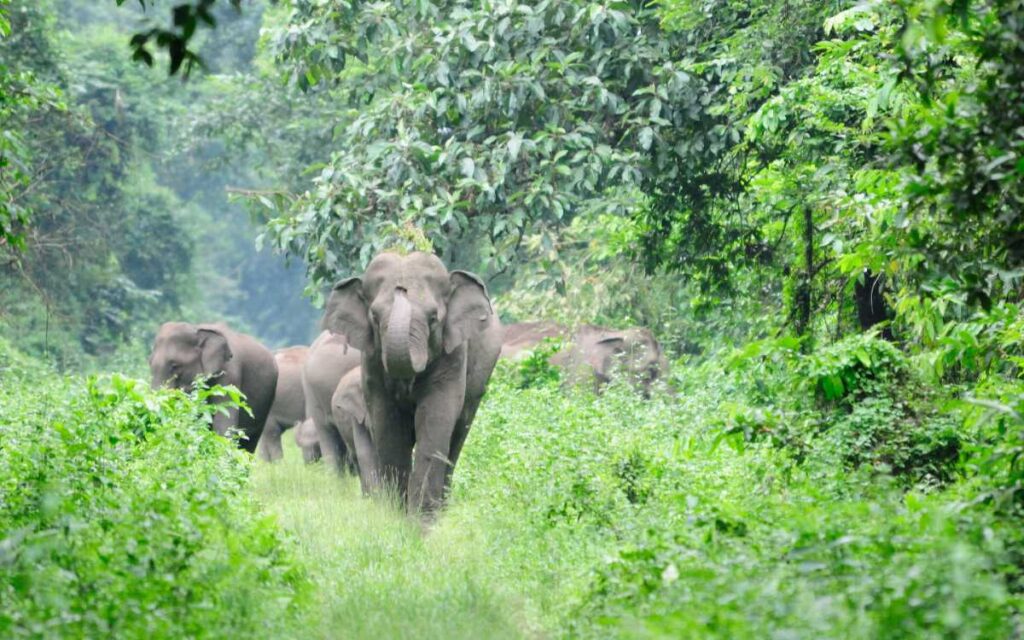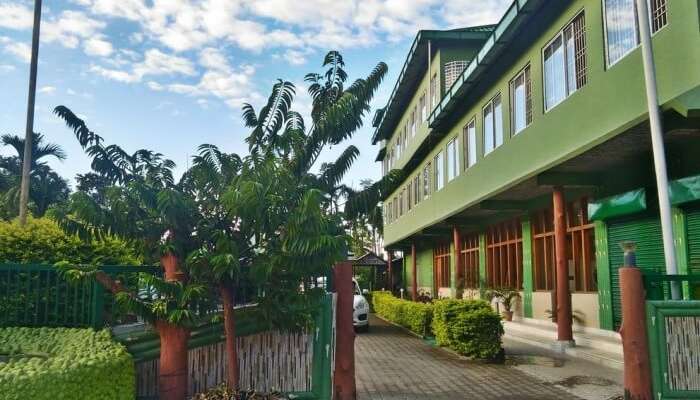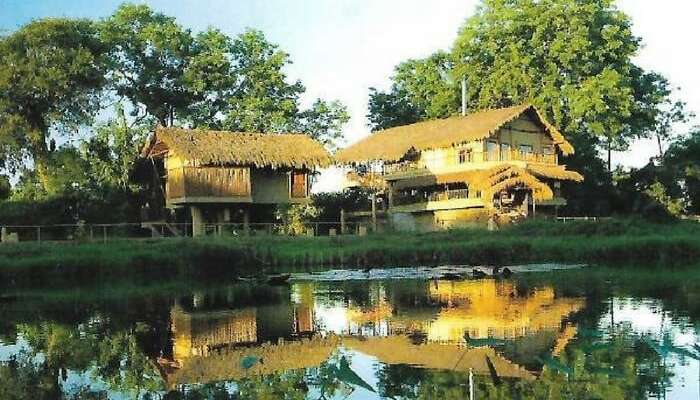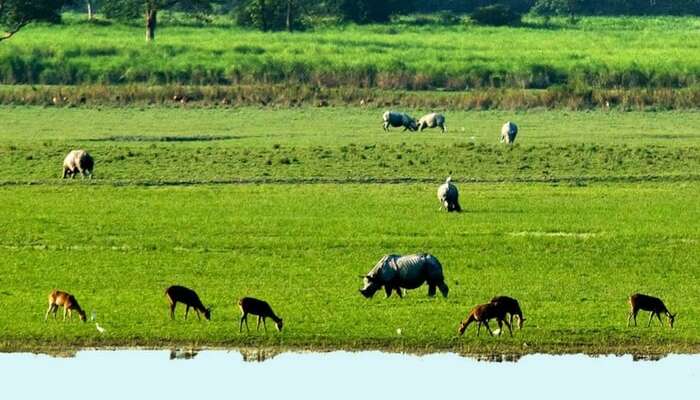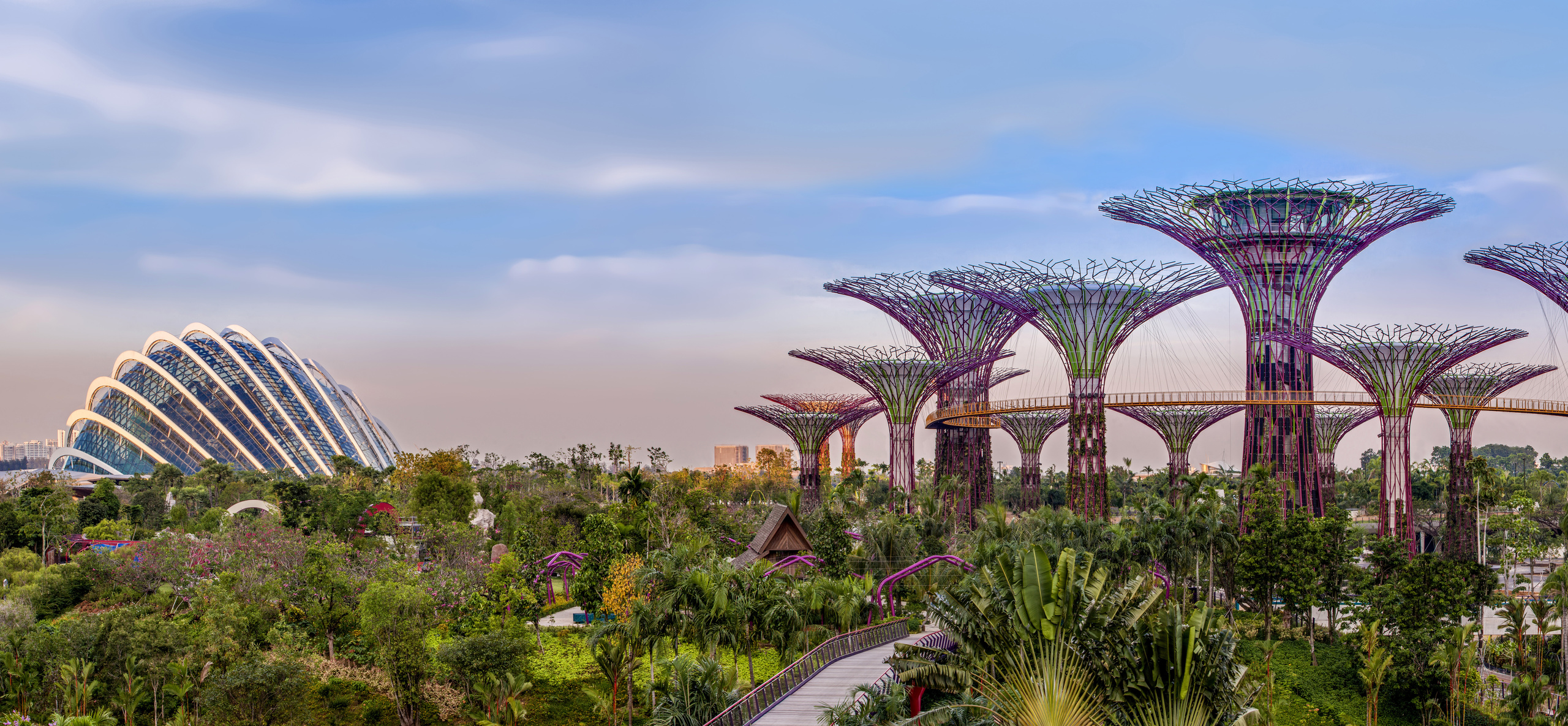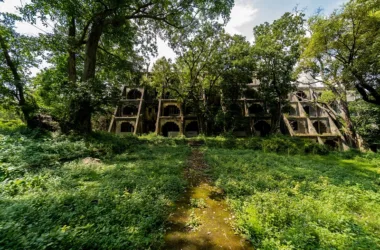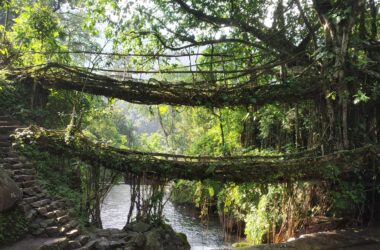Kaziranga National Park is situated in Golaghat, Karbi Anglong & Nagaon District of Assam State, India. It is most famous for its One-Horned Rhinoceros. Located on the edge of the Eastern Himalaya biodiversity hotspot, the park combines high species diversity & visibility. Park is located in the Indomalaya ecozone.
IMPORTANT MILESTONES
-1904, Mary Curzon wife of Lord Curzon, Viceroy of India persuaded her husband to form a reserved area for the protection of Rhinos. So, On 01 June 1905, Kaziranga proposed a reserve forest was created with an area of 232 Sq.km.
-1908, it got the status of ‘Reserve Forest’.
-1916, it was renamed ‘ Kaziranga Game Sanctuary ‘.
-1950, it was renamed as ‘ Kaziranga Wildlife Sanctuary ‘ by P.D. Stracey, the forest conservationist.
-1954, Assam Government passed Assam (Rhinoceros), Bill, & imposed heavy penalties for Rhino Poaching.
-11 February 1974, it was officially declared as ” Kaziranga National Park ” with a total area of 430 Sq.km.
1985, it was declared as a ” World Heritage Site ” by UNESCO.
FLORA
In this park, four main types of vegetation exist :
1. Alluvial inundated grasslands 2. Alluvial savanna woodlands. 3. Tropical mixed deciduous forests. 4. Tropical Semi-evergreen forests.
Whereas, Percentage coverage by vegetation is:
Tall Grasses : 41%, Short grasses : 11 %, Open jungle : 29 %, Swamps : 4 %, Rivers & waterbodies : 8 % and Sand : 6 %.
FAUNA
35 mammalian species, of which 15 are threatened present in the park. Park has the world’s largest Rhino population 2413 [As per 2018 Census]. It has India’s second-largest density of Royal Bengal Tigers [having 118 tigers]. Other animals include leopards, elephants, wild Asiatic buffalo, eastern swamp deer, jungle cat, leopard cat, etc. Small animals include hispid hare, Indian mongooses, Indian civets, Bengal fox, Assamese macaque, capped & golden langur, hoolock gibbon, endangered Ganges dolphin, etc.
As identified by Birdlife International, Kaziranga is an important bird area. It has a variety of birds such as lesser white framed goose, ferruginous duck, Asian openbill Stork of Central Asia, Blyth’s kingfisher, Nordmann’s greenshank, dalmatian pelican, eastern imperial, grey-headed fish eagle, and the lesser kestrel.
Kaziranga is managed by the wildlife wing of the forest department of Assam Government, Bokakhat. It remains open for tourists from November to April. Guided safari tours by elephant & jeep are available. But don’t try ‘Hiking’ as it is prohibited in this park to avoid animal-human conflicts.
Related Articles – Bandhavgarh National Park
Stays in & around Kaziranga National Park
There are plenty of hotels and resorts in and around Kaziranga. These stays are neatly tucked in the green environs of the national park and make for an exciting stay in and around the national park.
Kaziranga Hotels – In & Around
i) Landmark Woods
Tariff: INR 5000 per person onwards
Website | Reviews
ii) Santi Lodge
Tariff: INR 1750 per night per room on double sharing
Website | Reviews
iii) Diphlu River Lodge
Tariff: INR 12000 per person per night on twin sharing
Website | Reviews
iv) Wild Grass
Tariff: INR 4000 per night onwards
Website | Reviews
v) Koliabor Manor
Tariff: INR 4500 per night onwards
Website
Kaziranga national park resorts – in & around
vi) United 21 Grassland Resorts
Tariff: INR 4000 per night onwards
Website | Reviews
vii) Infinity Kaziranga Wilderness
Enquire here for rates
Website | Reviews
viii) Bonhabi Resort
Tariff: INR 5000 per night onwards
Website | Reviews
ix) Aranya Resort
Tariff: INR 4500 per night onwards
Website | Reviews
x) IORA – The retreat
Tariff: INR 5900 per night onwards
Website | Reviews
Travel Tips
- Elephant and jeep safari are available in all the zones except Burhapahad.
- Don’t forget to take the boat ride towards the northeastern part of the park.
- Central zone is the best place to go for safari in Kaziranga
- Elephant safari allows you to get closest to the rhinos.The first safari must be avoided especially during the winters as visibility is poor during morning hours.
Frequently Asked Questions About Kaziranga National Park
Q. What is the best time to visit Kaziranga National Park, Assam?
A. November – April is the best time to visit Kaziranga.
Q. What are the prices of a jungle safari in Kaziranga ?
A. Toll fees: INR 300 per vehicle,
Entry fee: INR 100 per person (Indian), INR 650 per person (foreigner)
Guard fee: INR 100 per vehicle
Fee for an elephant seat: INR 750 (Indian), INR 1250 (foreigner)
Q. What are the popular safari zones in Kaziranga National Park?
A. Kaziranga Range or Central Range, Bagori or Western Range, Agoratoli or Eastern Range, and Burapahar are the popular safari zones in Kaziranga.
Q. What are the safari timings at Kaziranga National Park?
A. Safari timings for the morning session is 5:30 am – 7:30 am whereas for the afternoon session it is 3 pm – 4 pm.
Q. What are the most frequently found animal species in Kaziranga National Park?
A. Some of the most popular animal species in the Kaziranga are Great Indian One Horned Rhino, Pigmy Hog, Royal Bengal Tiger, Elephant, Swamp Deer, Hispid Hare, Gangetic Dolphin, Wild Buffalo, Golden Langur, Hoolock Gibbon, Stump-tailed Macaque and Pig-tailed Macaque.
Q. What are the major attractions around Kaziranga National Park?
A. Some of the popular tourist attractions in Kaziranga are Hoollongapar Gibbon Sanctuary, Manas National Park, and Addabarie Tea Estate is some of the major attractions around Kaziranga National Park.
Q. Are there sufficient stay options in Kaziranga National Park?
A. Yes, there are a lot of good stay options in Kaziranga. Diphlu River Lodge, Kaziranga Resort, Resort Borgos, Wild Grass Lodge, Bonhabi, and Aranya Tourist Lodge are some of the most popular stay options in Kaziranga National Park.
Q. What are the popular entry points for Kaziranga National Park?
A. The different safari zones, Kaziranga Range or Central Range, Bagori or Western Range, Agoratoli or Eastern Range, and Burapahar, have their own entry points to the park.




